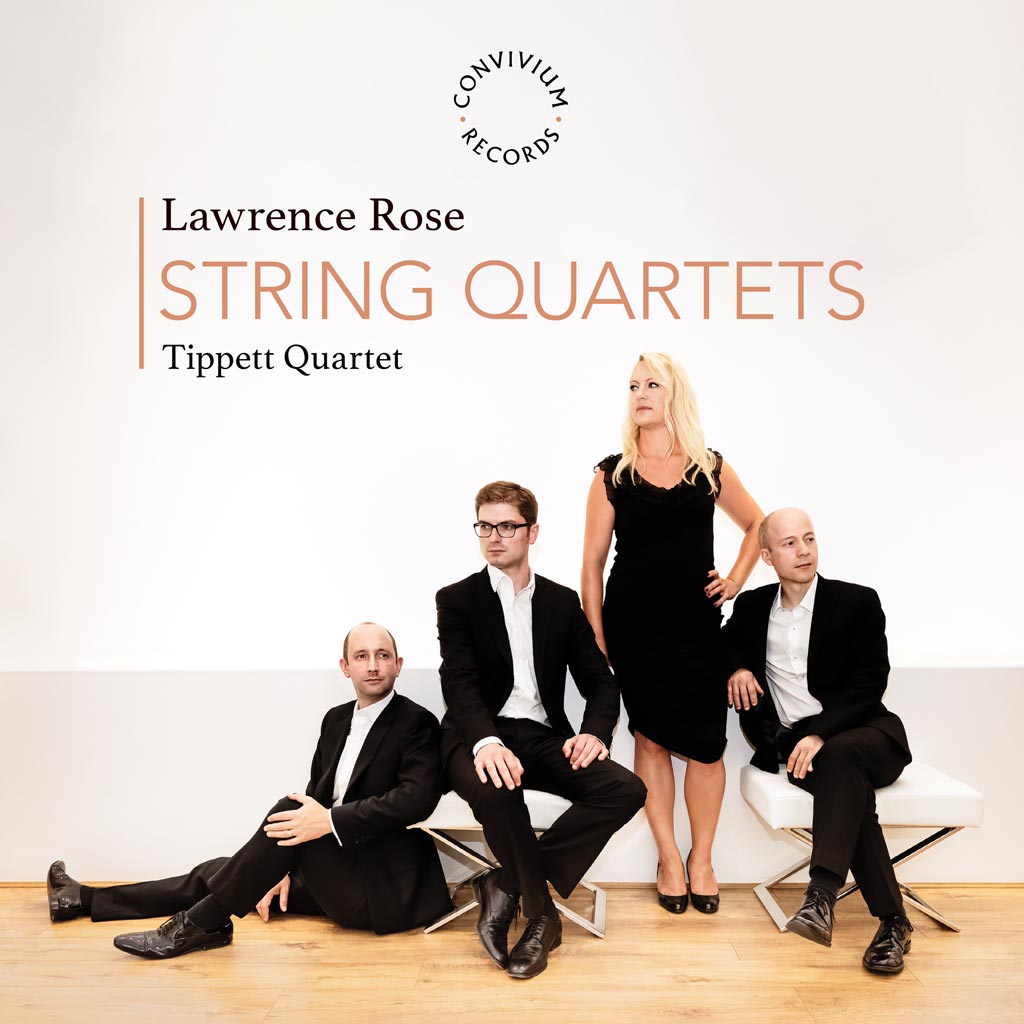Lawrence Rose: String Quartets – Review by Gramophone
“Excellent performances and superb sound set the seal on a quietly revelatory release.”
7th November 2025
Lawrence Rose: String Quartets – Review by Gramophone
“Excellent performances and superb sound set the seal on a quietly revelatory release.”
7th November 2025

Listen or buy this album:
Although now in his early 80s, English-born Lawrence Rose (b.1943) has a modest catalogue of just over 30 compositions, his Op 1 – an unaccompanied Sonata Movement for his own instrument, the violin – written as late as 2001. HIs career is not like that of Philip Sawyers (b.1951), who resumed composing at the millennium after a career as an orchestral player, but perhaps closer to Minna Keal’s (1909-99), who restarted studies after a lifetime running the family business. In Rose’s case, his interval focused on a career as a lawyer, retiring in his late 50s and moving to Chicago.
The two works played here with undeniable sympathy and commitment by the Tippett Quartet are from early and late in this reawakened career. Danses pour quatour – the title intentionally in French – dates from 2007, though its six movements were revised in 2024, the same year that he composed the Fourth Quartet. (Rose’s Quartets Nos 1–3 were written in 2009, 2013–14 and 2017 respectively.) Both compositions show a keen understanding of writing for strings and the sense of community and dialogue so essential in the best quartet-writing. As with Keal – with whose output Rose’s has little stylistic connection otherwise – the lyrical flow and expression shows some understanding of Shostakovich, though without the histrionic or depressive extremes of the Russian.
The genesis for the Danses arose from an idea to pursue a series of old dances through time, more or less historically, starting with a ‘Rigaudon’ – or a 21st-century recreation of one – and continuing through a ‘Sarabanda (quasi ciaconna)’, ‘Walzer’ – an intricate movement based on three ideas, like a trio of dances fused – followed by a slightly overlong ‘Tango (quasi habanera)’, slightly louche ‘Blue Foxtrot’ and, to tie up the threads, a closing ‘Invention’. The design succeeds in all essentials undemonstratively attaining a high level of achievement.
So, too, the Fourth Quartet, a subtle, nuanced work of absolute music. Its five movements, including a hefty finale, need and repay repeated listening. Excellent performances and superb sound set the seal on a quietly revelatory release.
Review written by:
Review published in:
Other reviews by this author:
Although now in his early 80s, English-born Lawrence Rose (b.1943) has a modest catalogue of just over 30 compositions, his Op 1 – an unaccompanied Sonata Movement for his own instrument, the violin – written as late as 2001. HIs career is not like that of Philip Sawyers (b.1951), who resumed composing at the millennium after a career as an orchestral player, but perhaps closer to Minna Keal’s (1909-99), who restarted studies after a lifetime running the family business. In Rose’s case, his interval focused on a career as a lawyer, retiring in his late 50s and moving to Chicago.
The two works played here with undeniable sympathy and commitment by the Tippett Quartet are from early and late in this reawakened career. Danses pour quatour – the title intentionally in French – dates from 2007, though its six movements were revised in 2024, the same year that he composed the Fourth Quartet. (Rose’s Quartets Nos 1–3 were written in 2009, 2013–14 and 2017 respectively.) Both compositions show a keen understanding of writing for strings and the sense of community and dialogue so essential in the best quartet-writing. As with Keal – with whose output Rose’s has little stylistic connection otherwise – the lyrical flow and expression shows some understanding of Shostakovich, though without the histrionic or depressive extremes of the Russian.
The genesis for the Danses arose from an idea to pursue a series of old dances through time, more or less historically, starting with a ‘Rigaudon’ – or a 21st-century recreation of one – and continuing through a ‘Sarabanda (quasi ciaconna)’, ‘Walzer’ – an intricate movement based on three ideas, like a trio of dances fused – followed by a slightly overlong ‘Tango (quasi habanera)’, slightly louche ‘Blue Foxtrot’ and, to tie up the threads, a closing ‘Invention’. The design succeeds in all essentials undemonstratively attaining a high level of achievement.
So, too, the Fourth Quartet, a subtle, nuanced work of absolute music. Its five movements, including a hefty finale, need and repay repeated listening. Excellent performances and superb sound set the seal on a quietly revelatory release.